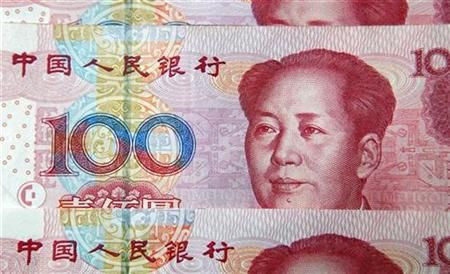China’s Non-Manufacturing Activity Rises In October: Official PMI

China's non-manufacturing activity rose in October compared to that in the previous month, decreasing the concerns over the slowdown in the economic growth of the country.
According to the data released Saturday by the National Bureau of Statistics and China Federation of Logistics and Purchasing, the non-manufacturing Purchasing Managers' Index (PMI) rose to 55.5 in October, up from 53.7 in September.
Significantly, the index remains in the expansion zone, a reading above 50. The expansion of the non-manufacturing activity should allay fears of a sharp retardation in the Chinese economy.
This news comes after earlier this week it was reported that China's manufacturing activity expanded in October after two months of contraction, giving indication that the second-largest economy is reviving its growth momentum. The data released Thursday morning by the China Federation of Logistics & Purchasing showed that the Purchasing Managers' Index rose to 50.2 in October from 49.8 in September.
Last month, it was reported that China’s industrial production rose in September compared to that in the previous month, indicating an upswing in the manufacturing output. The data released by the National Bureau of Statistics of China showed that the country’s industrial production rose to 9.2 percent in September, up from 8.9 percent in August and also more than the analysts’ expectation of 9 percent.
However, the continuing debt crisis in Europe and the tentative U.S. recovery have hurt the demand for exports, the key driver of China's economy. The International Monetary Fund has warned that the escalation of the euro zone debt problems could slash China's GDP growth for 2012 in half.
There have been fears of a hard landing after the data showed last month that China's gross domestic product growth slowed down to 7.4 percent in the third quarter, down from 7.6 percent in the second quarter, due to soft global demand and reduced real estate investment in the world's second largest economy.
The government has already lowered its economic growth target in 2012 to 7.5 percent. In 2011 and 2010, the economy grew at the rate of 9.2 percent and 10.4 percent respectively.
Earlier last month, it was reported that the rate of inflation in China slowed in September, showing signs of a gradual decline in price pressure to make room for monetary easing. The data from the National Bureau of Statistics showed that the consumer price index of China rose 1.9 percent in September from a year earlier, down from 2 percent in August. The diminishing inflation should be good news because it can help the government invigorate growth without much concern about rising prices.
Investors expect that instead of fighting inflation, the most urgent priority for China appears to be the pro-growth policy stance against the current uncertain global situation.
© Copyright IBTimes 2024. All rights reserved.




















